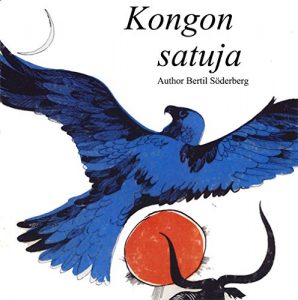”Congo’s folk tales are rich and diverse. Legends, myths, tales and fables have been passed on from generation to generation, and in some cases a tale or a fable has been shortened into a proverb with a vast cultural significance that varies depending on the storyteller’s depiction of it.
From a single source that can be summed up in just a few words, the African storyteller relates human imperfection and morality, religious representations and the surrounding nature to his listeners.
Children gather in a circle around the storyteller and as he talks of lifeless objects, such as a piece of pottery, or African animals as symbolic of people, everyone listens enthusiastically. He needn’t explain what a calabash is (the dried shell of a bottle gourd from the cucurbit vine). His listeners recognise the names of large trees as well as common animals that appear in the fables. To directly translate an African storyteller’s representation is nearly impossible since it would require too much detailed interpretation. Instead, I have tried to use the same method as African storytellers use. Beginning with a basic topic, I have attempted to explain Congo’s environment to Finnish children and hopefully to older readers as well.”
From a single source that can be summed up in just a few words, the African storyteller relates human imperfection and morality, religious representations and the surrounding nature to his listeners.
Children gather in a circle around the storyteller and as he talks of lifeless objects, such as a piece of pottery, or African animals as symbolic of people, everyone listens enthusiastically. He needn’t explain what a calabash is (the dried shell of a bottle gourd from the cucurbit vine). His listeners recognise the names of large trees as well as common animals that appear in the fables. To directly translate an African storyteller’s representation is nearly impossible since it would require too much detailed interpretation. Instead, I have tried to use the same method as African storytellers use. Beginning with a basic topic, I have attempted to explain Congo’s environment to Finnish children and hopefully to older readers as well.”












